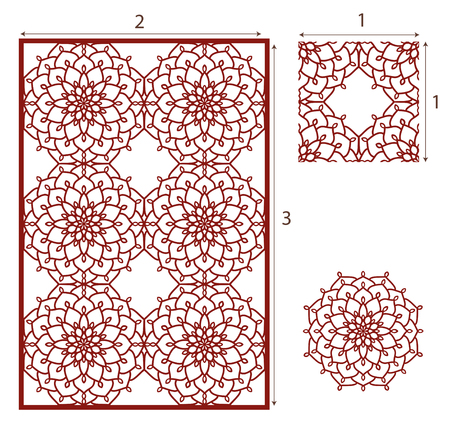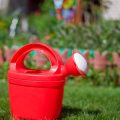1. Introduction to Modern Rock Gardens
Modern rock gardens are reshaping the look and feel of American yards, offering a fresh take on traditional landscaping. Unlike classic rock gardens that often mimic alpine environments, todays designs blend sleek lines, minimalism, and native plants to suit contemporary lifestyles and tastes. But what exactly makes these modern rock gardens stand out, and why are they becoming a go-to choice for homeowners across the United States?
What Sets Modern Rock Garden Designs Apart?
Modern rock gardens move beyond simply placing rocks and hardy plants together. They focus on clean aesthetics, sustainable plant choices, and low-maintenance arrangements that fit busy American lives. Here’s how modern designs differ from traditional ones:
| Feature | Traditional Rock Gardens | Modern Rock Gardens |
|---|---|---|
| Design Style | Naturalistic, rustic | Sleek, geometric, minimalist |
| Plant Selection | Mainly alpine & drought-tolerant species | Mix of natives, succulents, grasses & low-water plants |
| Rock Placement | Mimics natural outcrops | Intentional patterns & focal points |
| Maintenance Level | Moderate to high upkeep | Low-maintenance & sustainable |
| Cultural Influence | European/Asian inspiration | American lifestyle-oriented, eco-friendly focus |
The Evolution of Rock Gardens in America
The roots of rock gardening in America go back to the early 20th century when gardeners recreated mountain scenes using imported stones and rare alpine plants. Over time, as climate change awareness grew and water conservation became crucial—especially in regions like the Southwest—the style evolved. Homeowners started choosing drought-resistant plants, local rocks, and layouts that require less watering and upkeep.
Why Are Modern Rock Gardens So Popular Now?
- Water-wise landscaping: With drought conditions impacting many states, rock gardens offer an eco-friendly solution that saves water.
- Minimal maintenance: Busy families appreciate gardens that look great year-round without constant care.
- Aesthetic flexibility: The clean lines and bold textures work well with both modern architecture and more traditional homes.
- Biodiversity: Using native plants helps support local wildlife while reducing the need for chemicals.
- Curb appeal: A thoughtfully designed rock garden can make any yard stand out in the neighborhood.
If you’re looking to bring a modern touch to your outdoor space while keeping things simple and sustainable, exploring modern rock garden designs could be just what your yard needs.
2. Choosing the Right Rocks and Materials
When designing a modern rock garden for your American yard, selecting the right rocks and materials is key to achieving both style and curb appeal. The rocks you choose will set the tone for your landscape, while materials like gravel and hardscape features can add functionality and tie everything together.
Rock Types: Finding Your Perfect Match
Modern rock gardens often use clean lines and a mix of textures. Here are some popular options that work well in contemporary American yards:
| Rock Type | Best For | Visual Style | Regional Suitability |
|---|---|---|---|
| Limestone | Pathways, focal points | Crisp, light colors; smooth or rough textures | Midwest, South, Northeast |
| Boulders (Granite/Basalt) | Accent pieces, retaining walls | Bold, dramatic presence; rugged texture | Nationwide (choose local stone for authenticity) |
| River Rock | Ground cover, dry creek beds | Rounded, natural look; earth tones | Southeast, Pacific Northwest, Midwest |
| Sandstone or Flagstone | Paving, stepping stones | Flat surfaces; warm hues; modern edges when cut cleanly | Southwest, West Coast, Texas |
| Lava Rock | Xeriscapes, mulch alternative | Porous texture; deep reds or blacks add contrast | Southwest, West Coast |
Selecting Gravel for Modern Appeal
Gravel is a staple of modern rock gardens. It fills spaces between larger stones, creates walkways, and helps with drainage. For a contemporary look:
- Pea Gravel: Smooth and small; great for pathways.
- Crushed Granite: Angular shapes fit tight together for a sleek finish.
- Polished Pebbles: Black or white pebbles make bold statements in minimalist designs.
- Decomposed Granite: A fine material for patios or ground cover that compacts well.
Add Hardscape Elements with Function and Style
The right hardscape features not only look good but also make your yard more usable. Here are some ideas that blend seamlessly with modern American homes:
- Poured Concrete Slabs: Create geometric patios or stepping stone paths.
- Corten Steel Edging: Gives a crisp border to your garden beds or gravel areas.
- Sleek Benches and Planters: Use concrete or metal for a chic touch.
- Boulder Retaining Walls: Add structure while keeping things natural-looking.
- Drought-Tolerant Plant Beds: Surround rocks with native grasses or succulents for color and low maintenance.
A Quick Guide to Blending Materials for Curb Appeal
| Main Material | Pair With | Curb Appeal Tip |
|---|---|---|
| Boulders (granite/basalt) | Pebble ground cover + steel edging + ornamental grasses | Create bold contrasts and frame entryways for instant impact. |
| Limestone slabs | Poured concrete steps + native wildflowers | Makes front walks feel inviting yet modern. |
| Lava rock mulch | Drought-tolerant cacti + metal planters | Adds drama while being water-wise in arid regions. |
| Pebble mosaic accents | Smooth flagstone patio + LED path lighting | Makes nighttime curb appeal pop with subtle sparkle. |
Tips for Sourcing Materials Locally in the U.S.
- Select rocks quarried near your region to keep costs lower and match the natural landscape around you.
- Visit local stone yards to see colors and textures in person before purchasing.
- If you’re unsure about blending materials, bring photos of your home’s exterior—many suppliers offer advice on matching styles for maximum curb appeal.
Your choices in rocks and materials will be the foundation of your modern rock garden’s design. With thoughtful selection, you’ll create an outdoor space that feels fresh, functional, and uniquely suited to American living.

3. Sleek Plant Selections for Contemporary Looks
Choosing the right plants is key to creating a modern rock garden that fits seamlessly into contemporary American yards. By focusing on drought-tolerant, low-maintenance species, you can achieve a stylish look that’s also eco-friendly and sustainable. Here’s how you can select the best plants for your modern rock garden:
Why Drought-Tolerant and Native Plants?
Drought-tolerant plants are perfect for rock gardens because they thrive with minimal water. Native species are adapted to local conditions, making them easier to care for and beneficial for local wildlife. Both types of plants fit perfectly with today’s emphasis on sustainability and resource conservation.
Top Picks for Modern Rock Gardens
| Plant Name | Type | Main Features | Design Appeal |
|---|---|---|---|
| Blue Fescue (Festuca glauca) | Ornamental Grass | Drought-resistant, tidy mounds, bluish foliage | Modern color contrast and clean lines |
| Agave (Agave spp.) | Succulent | Low-water needs, striking architectural form | Sculptural centerpiece for bold gardens |
| Purple Coneflower (Echinacea purpurea) | Perennial Flower (Native) | Tough, pollinator-friendly, vivid blooms | Adds color pops with minimal care |
| Creeping Thyme (Thymus serpyllum) | Groundcover Herb | Drought-tolerant, aromatic, soft texture | Softens hard edges between rocks and stones |
| Yucca (Yucca filamentosa) | Evergreen Shrub (Native in some regions) | Tolerates heat and drought, sword-like leaves | Sharp silhouette for modern style gardens |
| Sedum (Stonecrop) | Succulent Groundcover | Loves sun, stores water, many varieties | Mosaic effect with varied leaf colors and textures |
| Palo Verde Tree (Parkinsonia florida) | Small Tree (Native Southwest US) | Drought-hardy, unique green bark, airy canopy | Adds height while keeping an open, contemporary feel |
Design Tips for Plant Placement
- Create layers: Combine tall structural plants like agave or yucca with lower-growing groundcovers such as creeping thyme or sedum for dimension.
- Group by water needs: Place plants with similar water requirements together to simplify care.
- Mix textures: Pair spiky leaves with softer grasses or flowering perennials for a balanced modern look.
Sustainability Benefits
By choosing drought-tolerant and native plants, you’ll save water, reduce maintenance time, and support local ecosystems—while also achieving a sleek, up-to-date aesthetic in your rock garden.
4. Integrating Rock Gardens into American Yard Layouts
Modern rock gardens can bring a unique, low-maintenance beauty to any American yard. Whether you have a sprawling suburban lot or a compact city space, these gardens can be tailored to fit your lifestyle and local vibe. Here are some practical tips for placing and scaling rock gardens so they look right at home in front yards, backyards, or as part of a complete landscape plan.
Tips for Placing Rock Gardens
- Front Yard Accents: Use rock gardens as eye-catching focal points near your entryway or along the driveway. Choose bold stones and easy-care plants that welcome guests with texture and color.
- Backyard Retreats: Create a peaceful escape by designing a larger rock garden tucked into a corner or bordering a patio. Combine rocks with native grasses and perennials for a relaxing, natural look.
- Slopes and Hills: If your yard has uneven ground, use rock gardens to prevent erosion while adding visual interest. Terracing with boulders and drought-tolerant plants works especially well in these spots.
- Pathway Edges: Line walkways with smaller rocks and low-growing plants to soften hard edges and guide visitors through your outdoor space.
Sizing and Scaling for American Yards
| Yard Size | Suggested Rock Garden Placement | Design Tips |
|---|---|---|
| Small Urban Yard | Corner accent, entryway border | Choose compact stones; keep plantings simple for clean lines |
| Medium Suburban Lot | Front walkway, backyard patio edge | Mix medium-sized boulders with clusters of hardy perennials |
| Large Rural Property | Slope stabilization, standalone features | Go big with boulders; incorporate native shrubs for scale |
Blending with Overall Landscape Plans
Think about how your rock garden will interact with existing elements like lawns, trees, and flowerbeds. For a seamless look, repeat colors or textures found elsewhere in your yard. You can even tie in modern touches—like metal edging or geometric stone patterns—to match contemporary American home styles.
Quick Design Checklist:
- Select rocks that complement your homes exterior colors
- Vary stone sizes for natural appeal
- Add mulch or gravel for a tidy finish and weed control
- Group plants in odd numbers for a balanced effect
- Leave open space for future additions or seasonal accents
5. Maintenance Tips and Seasonal Care
Keeping your modern rock garden looking sharp in an American yard doesn’t have to be a chore. With just a little regular care, your rock garden can stay vibrant and tidy all year long. Here are some straightforward tips for ongoing maintenance and seasonal upkeep:
Weed Prevention and Control
One of the best things about rock gardens is low maintenance, but weeds can still sneak in. Use landscape fabric under your rocks to block most weed growth. For any weeds that pop up, hand-pull them or spot-treat with eco-friendly weed killers.
Quick Weed Prevention Table
| Method | How Often | Notes |
|---|---|---|
| Landscape Fabric | Install once, check yearly | Prevents most weeds from sprouting |
| Hand-Pulling | As needed | Easiest after rain or watering |
| Mulching with Gravel/Stone | Add new layer every 1-2 years | Keeps soil covered & discourages weeds |
Watering Needs for Rock Gardens
Most plants used in modern rock gardens are drought-tolerant, but newly planted areas will need regular watering until roots are established. After that, water deeply but infrequently—usually only during extended dry spells. Always check soil moisture before watering.
Seasonal Touch-Ups by Season
Spring Care
- Remove fallen leaves and debris to let plants breathe.
- Prune back dead stems from last year’s growth.
- Add new mulch or gravel if needed.
- Check for any frost damage and trim as necessary.
Summer Care
- Monitor for pests like aphids or spider mites; treat early if found.
- Irrigate during dry spells, especially for new plantings.
- Tidy up spent blooms for a cleaner look.
Fall Care
- Cut back perennials that have finished blooming.
- Add a light layer of mulch to protect roots over winter.
- Check rocks for stability after heavy rains or storms.
Winter Prep (if applicable in your region)
- If you’re in a snowy area, brush off heavy snow to avoid damage to delicate plants.
- Avoid using road salt near your garden—it can harm both plants and stones.
- Plan for spring plant replacements or design tweaks while everything’s dormant.
Regular Rock and Plant Upkeep
- Lichen & Algae: If you notice green or gray patches on your rocks, scrub gently with a brush and water—no harsh chemicals needed!
- Plant Health: Remove any sickly plants promptly and replace with fresh choices suited to your climate zone.
- Edit Your Garden: Modern designs thrive on simplicity. Don’t be afraid to remove overcrowded plants or add new focal points as your tastes change.
With these simple maintenance steps, your modern rock garden will keep its clean lines, bold textures, and thriving plants—making it an eye-catching feature in your American yard through every season!


